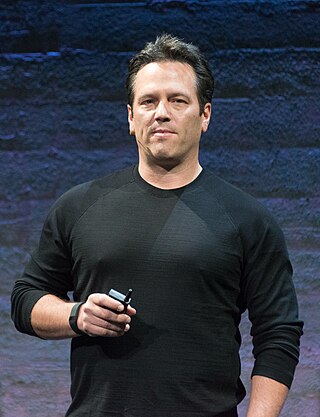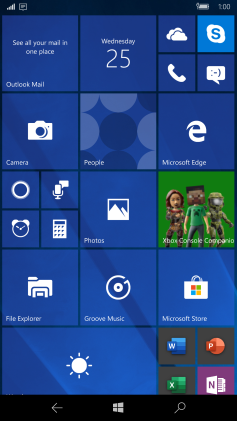
ThinkPad is a line of business-oriented laptop computers and tablets, the early models of which were designed, developed and marketed by International Business Machines (IBM) starting in 1992. IBM sold its PC business, including laptops to Lenovo in 2005, and since 2007, all new ThinkPad models have been branded Lenovo instead. The Chinese manufacturer further developed the line, and is still selling new models in 2024.

A tablet computer, commonly shortened to tablet, is a mobile device, typically with a mobile operating system and touchscreen display processing circuitry, and a rechargeable battery in a single, thin and flat package. Tablets, being computers, have similar capabilities, but lack some input/output (I/O) abilities that others have. Modern tablets largely resemble modern smartphones, the only differences being that tablets are relatively larger than smartphones, with screens 7 inches (18 cm) or larger, measured diagonally, and may not support access to a cellular network. Unlike laptops, tablets usually run mobile operating systems, alongside smartphones.
Microsoft engineering groups are the operating divisions of Microsoft. Starting in April 2002, Microsoft organised itself into seven groups, each an independent financial entity. In September 2005, Microsoft announced a reorganization of its then seven groups into three. In July 2013, Microsoft announced another reorganization into five engineering groups and six corporate affairs groups. A year later, in June 2015, Microsoft reformed into three engineering groups. In September 2016, a new group was created to focus on artificial intelligence and research. On March 29, 2018, a new structure merged all of these into three.
Microsoft Corporation has been selling branded hardware since 1980, and developing devices in-house since 1982, when the Microsoft Hardware division was formed to design a computer mouse for use with Microsoft Word for DOS. Since then, Microsoft has developed computer hardware, gaming hardware and mobile hardware. It also produced drivers and other software for integrating the hardware with Microsoft Windows.

A dual-touchscreen is a computer or phone display setup which uses two screens, either or both of which could be touch-capable, to display both elements of the computer's graphical user interface and virtualized implementations of common input devices, including virtual keyboards. Usually, in a dual-touchscreen computer or computing device, the most persistent GUI elements and functions are displayed on one, hand-accessible touchscreen alongside the virtual keyboard, while the other, more optically-centric display is used for those user interface elements which are either less or never accessed by user-generated behaviors.

Microsoft Tablet PC is a term coined by Microsoft for tablet computers conforming to hardware specifications, devised by Microsoft and announced in 2001, for a pen-enabled personal computer, and running a licensed copy of Windows XP Tablet PC Edition operating system or a derivative thereof.

A 2-in-1 laptop, also known as 2-in-1 PC, 2-in-1 tablet, laplet, tabtop, laptop tablet, or simply 2-in-1, is a portable computer that has features of both tablets and laptops.

Windows RT is a mobile operating system developed by Microsoft. It is a version of Windows 8 or Windows 8.1 built for the 32-bit ARM architecture (ARMv7). First unveiled in January 2011 at Consumer Electronics Show, the Windows RT 8 operating system was officially launched alongside Windows 8 on October 26, 2012, with the release of three Windows RT-based devices, including Microsoft's original Surface tablet. Unlike Windows 8, Windows RT is only available as preloaded software on devices specifically designed for the operating system by original equipment manufacturers (OEMs).

Microsoft Surface is a series of touchscreen-based personal computers, tablets, and interactive whiteboards designed and developed by Microsoft, most of them running the Windows operating system. They are designed to be premium devices that set examples for manufacturers of other Windows-compatible products. It comprises several generations of hybrid tablets, 2-in-1 detachable notebooks, a convertible desktop all-in-one, an interactive whiteboard, and various accessories, many with unique form factors. The majority of devices in the Surface lineup are based on Intel processors and compatible with Windows 10 or Windows 11.
The HP Envy is a line of consumer-oriented high-end laptops, desktop computers and printers manufactured and sold by HP Inc. They started as a high-end version of the HP Pavilion line.
The Lenovo Miix was a series of multi-mode computing devices that function as both a tablet and a notebook computer.

The Surface Pro 2 is a Surface-series 2-in-1 detachable produced by Microsoft. Unveiled at an event in New York City on September 23, 2013 and released on October 22, 2013, it succeeds the Surface Pro released in February 2013. While maintaining a design similar to the original design of its predecessor, the Surface Pro 2 has improved hardware specifications compared to it, such as a Haswell Intel Core processor and an increased number of storage options, improved versions of the kickstand and cover accessories.

Phil Spencer is an American business executive and the CEO of Microsoft Gaming. Starting his career at Microsoft as an intern in 1988, Spencer has worked in various sectors within the company, including developing Microsoft's first CD-ROM-based titles. He joined the Xbox team in 2001.

The Surface Pro 3 is the third-generation Surface-series 2-in-1 detachable, designed, developed, marketed, and produced by Microsoft. It originally ran the Windows 8.1 Pro operating system (OS), but the optional upgrade to Windows 10 Pro (OS) operating system was later added.

Windows 10 Mobile is a mobile operating system developed by Microsoft. First released in 2015, it is the successor to Windows Phone 8.1, but was marketed by Microsoft as being an edition of its PC operating system Windows 10.

Windows Mixed Reality (WMR) is a discontinued platform by Microsoft which provides augmented reality and virtual reality experiences with compatible head-mounted displays.

Microsoft HoloLens is an augmented reality (AR)/mixed reality (MR) headset developed and manufactured by Microsoft. HoloLens runs the Windows Mixed Reality platform under the Windows 10 operating system. Some of the positional tracking technology used in HoloLens can trace its lineage to the Microsoft Kinect, an accessory for Microsoft's Xbox 360 and Xbox One game consoles that was introduced in 2010.

The Surface Book is a 2-in-1 PC designed and produced by Microsoft, part of the company's Surface line of personal computing devices. Surface Book is distinguished from other Surface devices primarily by its full-sized, detachable keyboard, which uses a dynamic fulcrum hinge that expands when it is opened. The keyboard contains a second battery, a number of ports and an optional discrete graphics card used when the screen part, also dubbed as the clipboard by Microsoft, is docked to it. Unlike Surface Pro devices, which are marketed as tablets, the Surface Book is marketed as a laptop, Microsoft's first device marketed as such. Unlike the Surface Laptop devices, the two parts are detachable.
The Surface Neo is an unreleased dual-touchscreen 2-in-1 PC that was unveiled by Microsoft on October 2, 2019. Slated to be part of the Microsoft Surface family of devices, the Surface Neo was designed to be used in various "postures" for different use cases and multitasking scenarios involving its screens, and feature Windows 10X—a variant of Windows 10 designed exclusively for dual-screen devices. However, as of December 2023, over four years after the Surface Neo was announced, it is still unreleased, likely rendering it vaporware.
The Surface Book 3 is the third generation of Microsoft's Surface Book series, and a successor to the Surface Book 2. Like its previous generation, the Surface Book 3 is part of the Microsoft Surface lineup of personal computers. It is a 2-in-1 PC that can be used like a conventional laptop, or detached from its base for use as a separate tablet, with touch and stylus input support in both scenarios. It was announced by Microsoft online alongside the Surface Go 2 on May 6, 2020, and later released for purchase on May 12, 2020.














